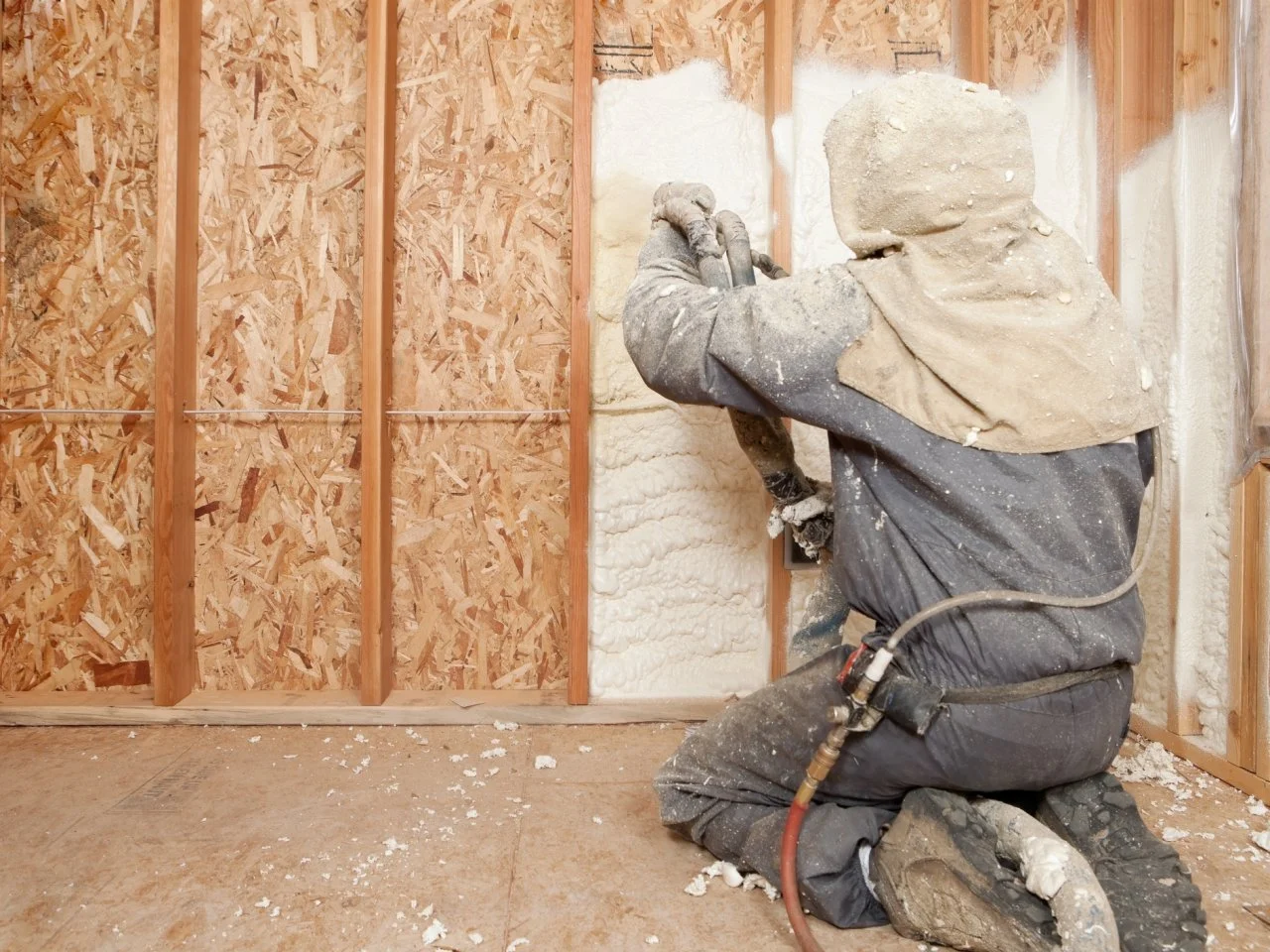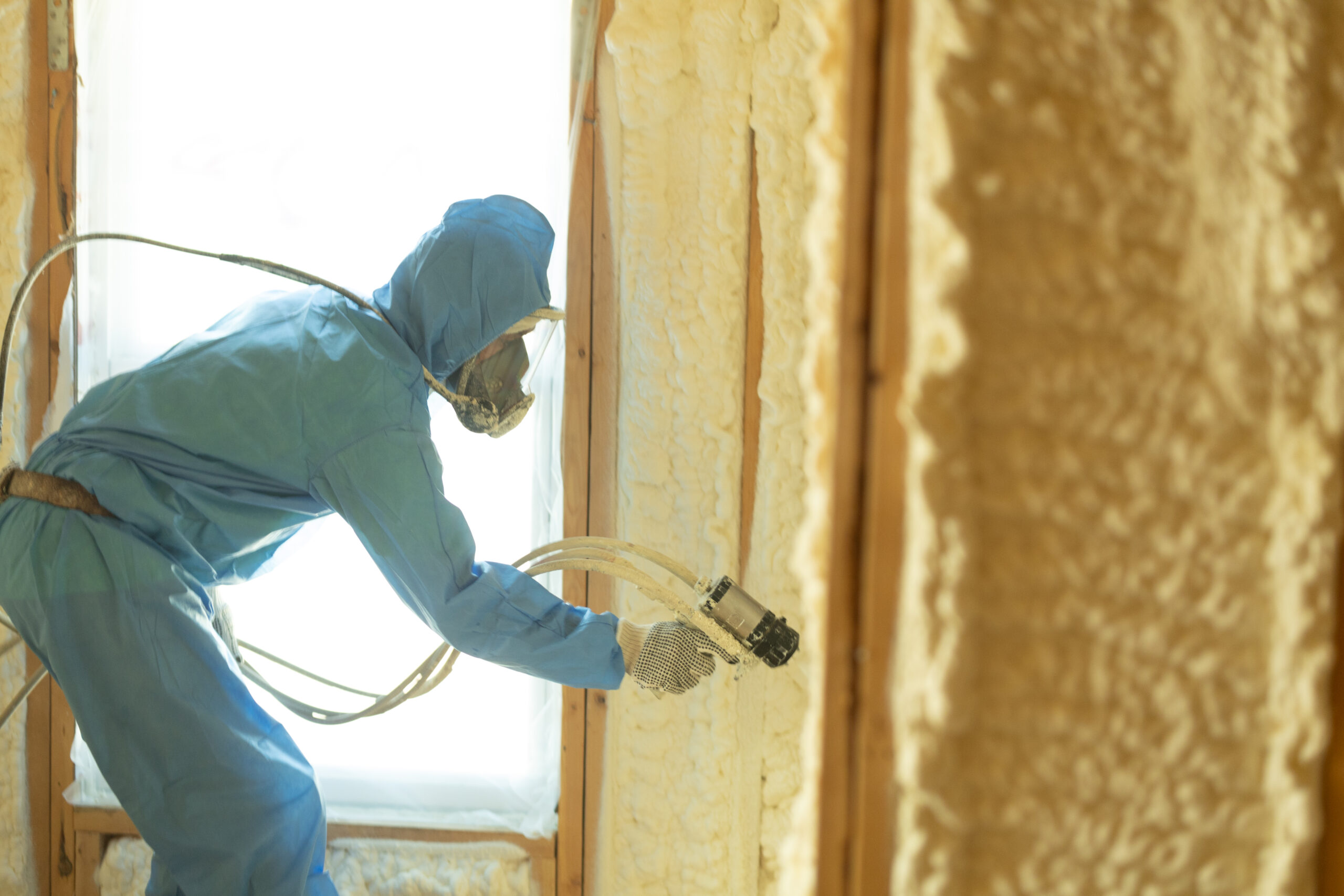Spray Foam: The Ultimate Service for Air Sealing and Insulation
Spray foam insulation has actually become a leading solution for reliable air sealing and thermal insulation, using an one-of-a-kind mix of buildings that set it apart from typical approaches. Its ability to increase and fill spaces makes it specifically reliable in preventing air leak, which can considerably affect energy effectiveness. Nevertheless, understanding the full scope of its benefits, setup procedures, and comparisons with various other insulation kinds is crucial for making educated choices. As we check out these facets, the implications for both new constructions and retrofits become significantly substantial. What factors should influence your selection?
What Is Spray Foam?
Spray foam is a flexible insulation material that incorporates the principles of air sealing and thermal resistance to improve power efficiency in structures. Composed primarily of polyurethane or other comparable substances, spray foam is applied as a fluid that increases upon contact with surfaces, producing a strong, constant layer of insulation. This one-of-a-kind property allows it to fill up gaps, splits, and voids that conventional insulation materials may forget, offering an exceptional air seal.
There are 2 primary kinds of spray foam: open-cell and closed-cell. Open-cell spray foam is lighter and much more versatile, offering superb noise absorption and a reduced R-value per inch - Spray Foam. On the other hand, closed-cell spray foam is denser, supplying a higher R-value, moisture resistance, and added architectural integrity to building parts
The application process usually involves specific equipment, ensuring a seamless application that follows numerous substratums, including wood, concrete, and steel. This flexibility makes spray foam suitable for both brand-new constructions and retrofitting existing frameworks. Its capability to produce a closed barrier significantly adds to decreasing power usage and enhancing interior air quality, thus making it a recommended option amongst building contractors and house owners alike.
Benefits of Spray Foam Insulation
One of the most considerable benefits of spray foam insulation is its phenomenal capacity to develop a continual air obstacle, which properly minimizes power loss. Unlike typical insulation materials, spray foam expands to fill splits and gaps, making certain that air leakage is substantially lowered. This characteristic not only boosts power efficiency however additionally brings about decrease energy expenses in time.
Additionally, spray foam insulation provides remarkable thermal resistance, adding to a much more stable indoor environment. Its high R-value per inch enables for reliable insulation in restricted rooms, making it excellent for attics, wall surfaces, and crawl areas. In addition, the moisture-resistant properties of spray foam aid prevent mold and mildew and mold growth, advertising much healthier living problems.
One more crucial benefit of spray foam insulation is its sound-dampening top qualities (Spray Foam). It efficiently decreases noise transmission between spaces, developing a quieter and more comfy home environment. The resilience of spray foam also attracts attention, as it does not sag or work out over time, keeping its performance throughout its life-span
How Spray Foam Functions
Understanding just how spray foam insulation functions is vital for valuing its effectiveness in air securing and thermal resistance. Spray foam insulation consists of 2 key elements: isocyanate and polyol resin. When these parts are mixed, they go through a chemical reaction that triggers the product to expand quickly, producing a thick foam that fills cracks, cavities, and voids.
As the foam increases, it sticks to surfaces, developing an impermeable seal that considerably minimizes air seepage. This particular makes spray foam insulation highly effective at stopping drafts and dampness infiltration, which can lead to energy loss and damage gradually. Furthermore, the closed-cell version of spray foam supplies premium thermal resistance due to find out this here its rigid structure, efficiently lessening warmth transfer.
The one-of-a-kind homes of spray foam enable it to comply with uneven surface areas, making certain thorough insurance coverage and a smooth obstacle. As an outcome, spray foam insulation not just boosts power effectiveness however likewise adds to improved interior air high quality by decreasing the build-up of irritants and toxins. Ultimately, recognizing the mechanics behind spray foam underscores its role as a premium selection for insulation and air sealing in both industrial and domestic applications.
Setup Process Introduction

Prior to installation, the area should be properly cleaned up and prepped, making certain that surfaces are without wetness, particles, and dust. Due to the fact that impurities can compromise adhesion and overall performance, this step is important. When the location is prepared, the application entails blending the two parts of the spray foam, which expands upon contact and fills gaps efficiently.
Trained experts must carry out the setup, using specific devices to make sure uniform protection and ideal density. Security safety measures, including wearing safety equipment and guaranteeing correct air flow, are important during this procedure. After application, the foam commonly treatments swiftly, developing a strong obstacle that improves energy performance.
Contrasting Spray Foam to Standard Insulation
When examining insulation options, spray foam insulation stands out in contrast to typical materials such as fiberglass and cellulose. Among the key advantages of spray foam is its exceptional air sealing capacities. Unlike fiberglass and cellulose, which can enable air infiltration, spray foam increases upon application, filling up spaces and crevices to create an impermeable seal. This leads to enhanced power effectiveness, as less warmed or cooled air runs away the home, causing lower energy expenses.
Furthermore, spray foam provides a greater R-value per inch than traditional insulation types, offering even more effective thermal resistance in a thinner profile. This particular is especially useful in spaces with restricted dental caries depth. Spray foam is resistant to moisture and mold development, which can be a substantial issue with cellulose and fiberglass, especially in moist environments.
Nevertheless, spray foam insulation commonly carries a higher ahead of you can try this out time price than its conventional counterparts. Home owners must evaluate this preliminary financial investment versus long-term energy cost savings and efficiency advantages. Inevitably, while both insulation types serve their purpose, spray foam arises as an advanced service for contemporary insulation needs, especially in terms of air securing and thermal effectiveness.

Final Thought
In recap, spray foam insulation stands for an extremely efficient service for accomplishing ideal air sealing and thermal resistance. Its distinct homes, including moisture resistance and sound dampening, make it ideal for numerous applications in both new building and constructions and retrofitting jobs (Spray Foam). The first expenses might be higher compared to typical insulation products, the long-term advantages, such as considerable energy savings and improved interior air high quality, justify the financial investment and underscore its worth in modern structure techniques.
Spray foam insulation has actually emerged as a leading remedy for efficient air securing and thermal insulation, using an unique mix of residential properties that set it apart from typical approaches.Spray foam is a flexible insulation product that integrates the concepts of air sealing and thermal resistance to improve power effectiveness in structures.When assessing insulation alternatives, spray foam insulation stands out in contrast to traditional products such as fiberglass and cellulose. Inevitably, while both insulation types offer their objective, spray foam emerges as a much more advanced option for modern-day insulation demands, especially in terms of air securing and thermal performance.
In summary, spray foam insulation represents a very effective service for accomplishing optimum air sealing and thermal resistance.